Intense activity at Nishinoshima volcano, summit crater extends as explosive eruptions continue, Japan
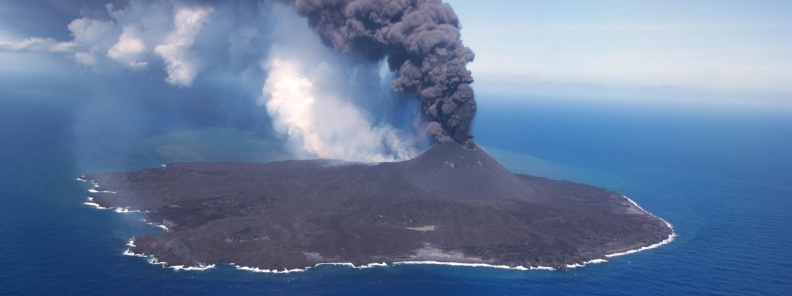
Nishinoshima has entered a period of intense volcanic activity, with frequent explosive eruptions and ash emissions observed in recent days. Its summit crater has extended in the southwest direction, the Japan Coast Guard (JCG) reported on July 1, 2020
On June 12, the Japan Meteorological Agency (JMA) recorded an ash plume up to 1 900 m (6 200 feet) above the summit, which drifted northeast.
JCG conducted flight observations days later, on June 16, reporting that explosions at the volcano generated dense ash plume up to 2 000 m (6 500 feet) above the summit. Blocks were emitted as far as 2.5 km (1.5 miles) away from the crater.
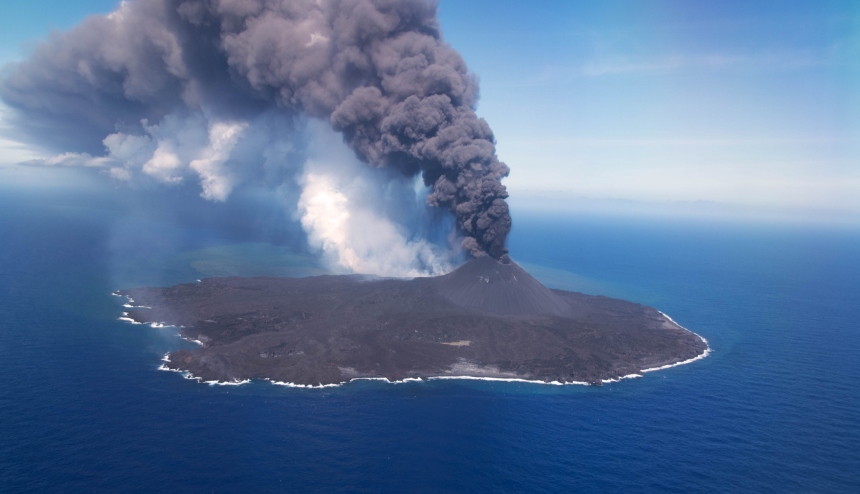
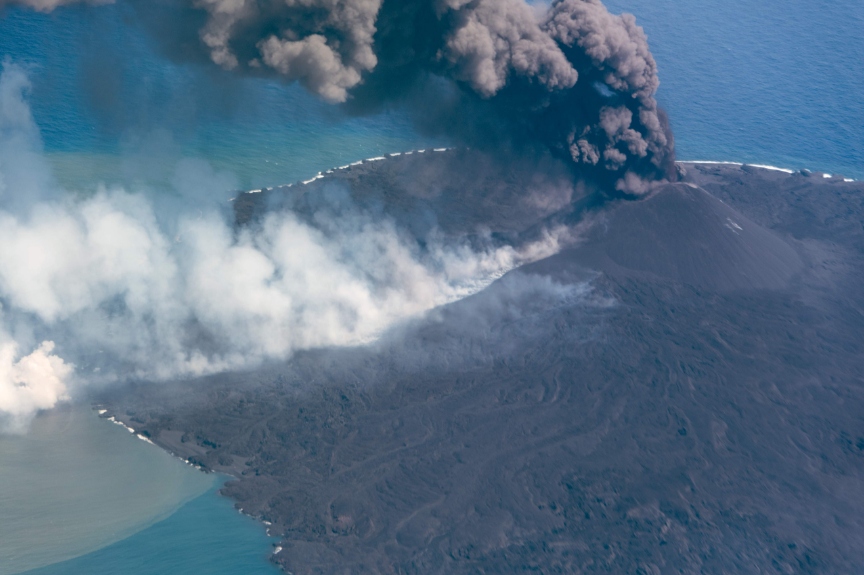
Nishinoshima volcano, taken on June 15, 2020. Image credit: JCG
On June 25, JCG reported strong explosions again on the volcano, with dark ash plume reaching up to 2 600 m (8 500 feet) above the summit.
Volcanic ash extended about 330 km (205 miles) to the northeast.
The latest @copernicusEu #Sentinel3 images clear enough to look at #Nishinoshima activity were captured on June 27th(OLCI) &28th(SLSTR)showing its plume and strong thermal anomaly. #Volcano #japan @DlrSo2 @ESA_EO @SanGasso @elisa_ox @infomitigasi @UEhttps://t.co/YiPoneLqmC pic.twitter.com/G6ODBDMIuC
— antonio vecoli (@tonyveco) June 29, 2020
#volcan #volcano #Nishinoshima L'activité éruptive reste très intense: fontaines et coulées de lave /Eruptive activity remains very sustained:fountains source of strong ash emissions, and lava flows. https://t.co/7H2eDDs2io pic.twitter.com/TCwfCp5Q3y
— CultureVolcan (@CultureVolcan) June 25, 2020
At 18:00 UTC on June 27 (03:00 LT on June 28), JMA recorded strong eruption, with a dense dark ash plume up to 3 800 m (12 500 feet) above the crater, which drifted northeast.
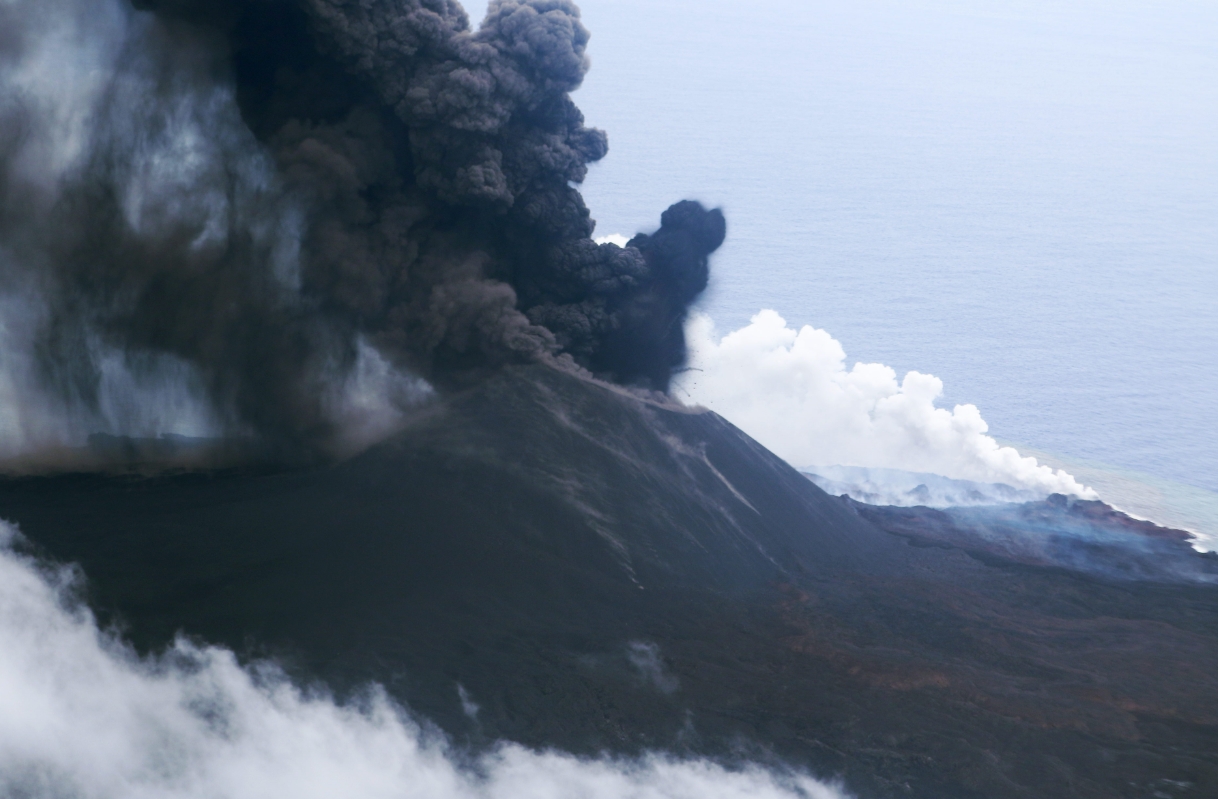
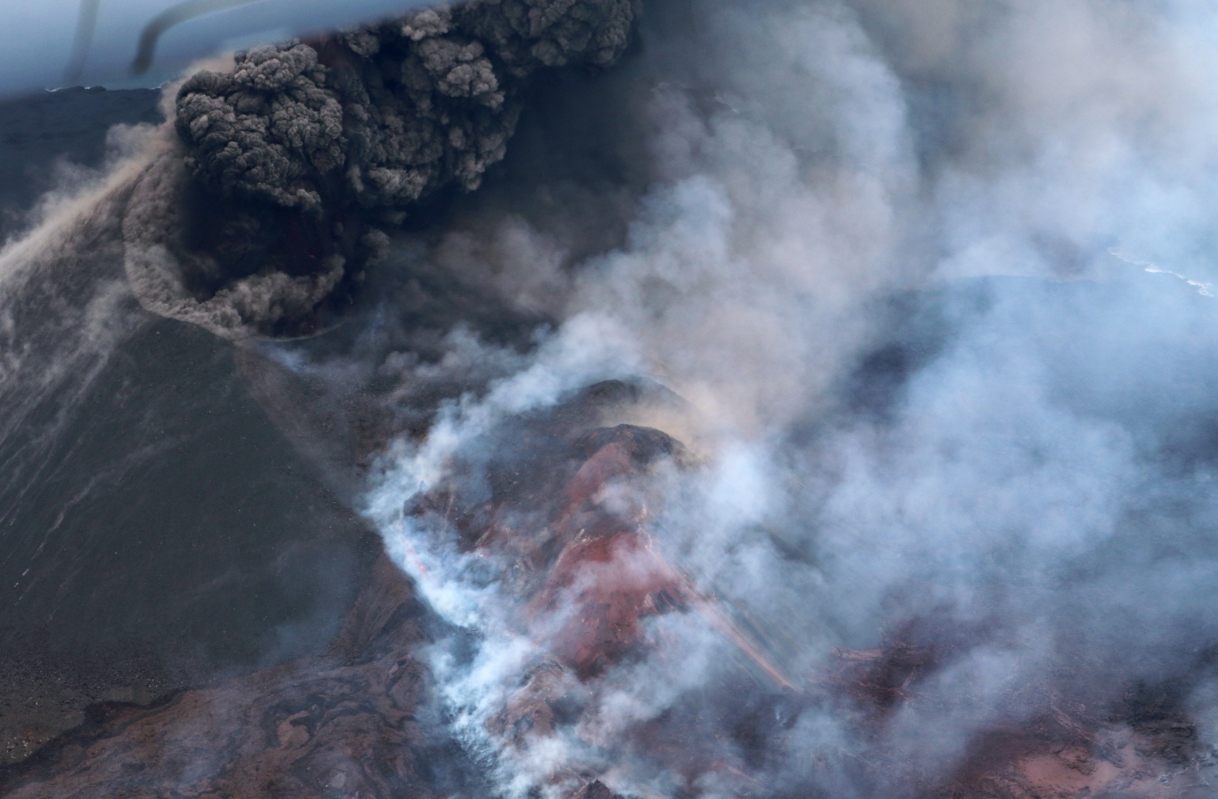
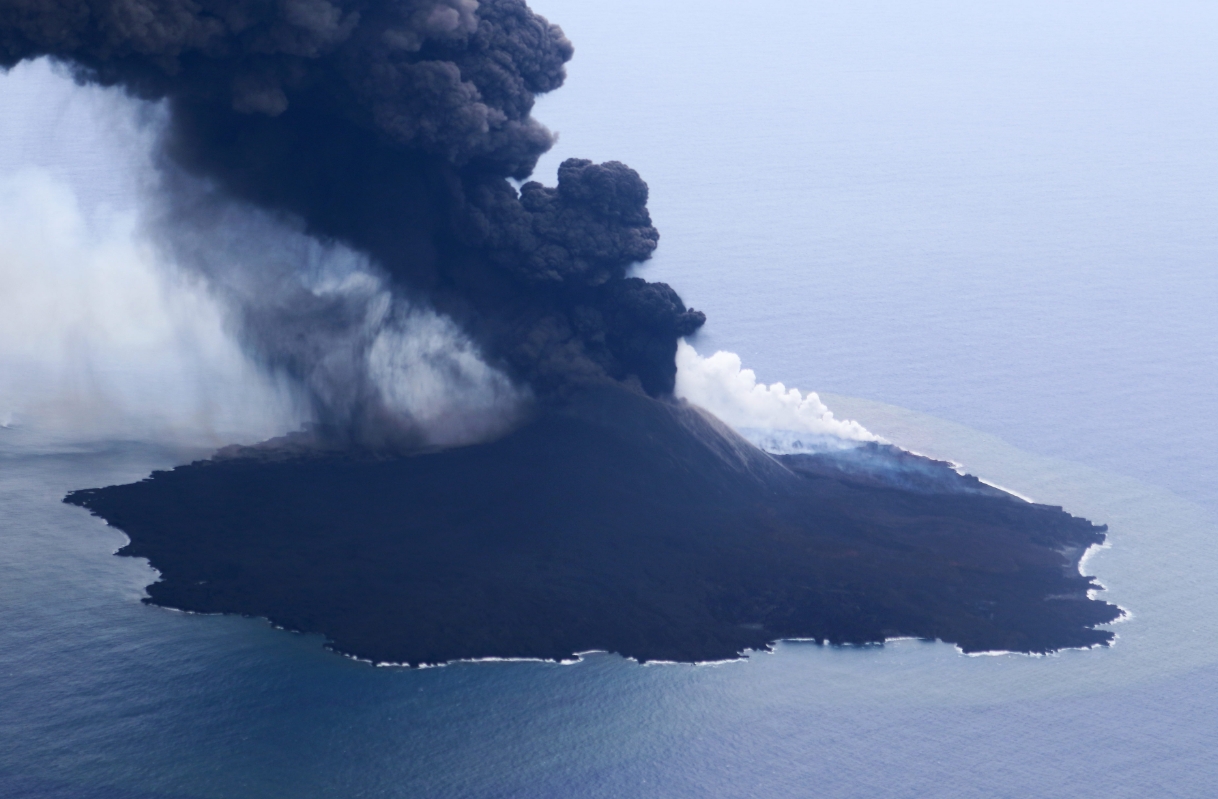
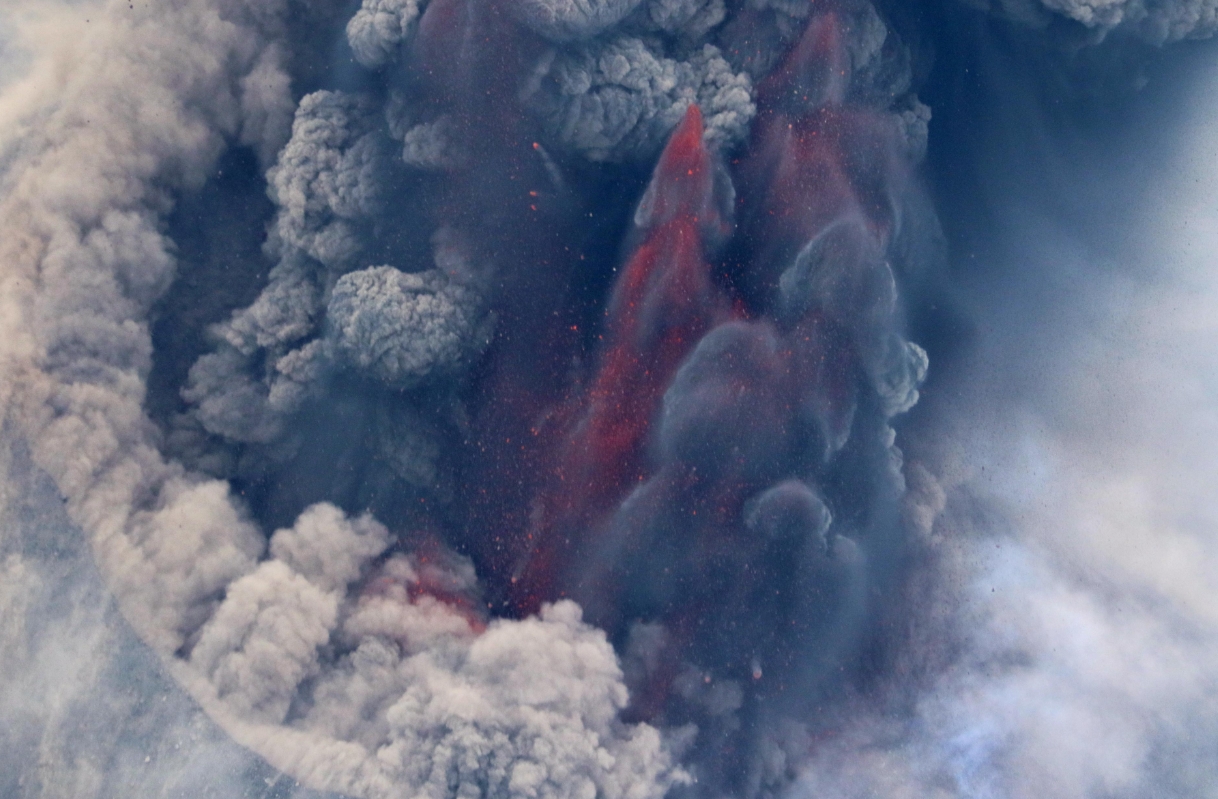
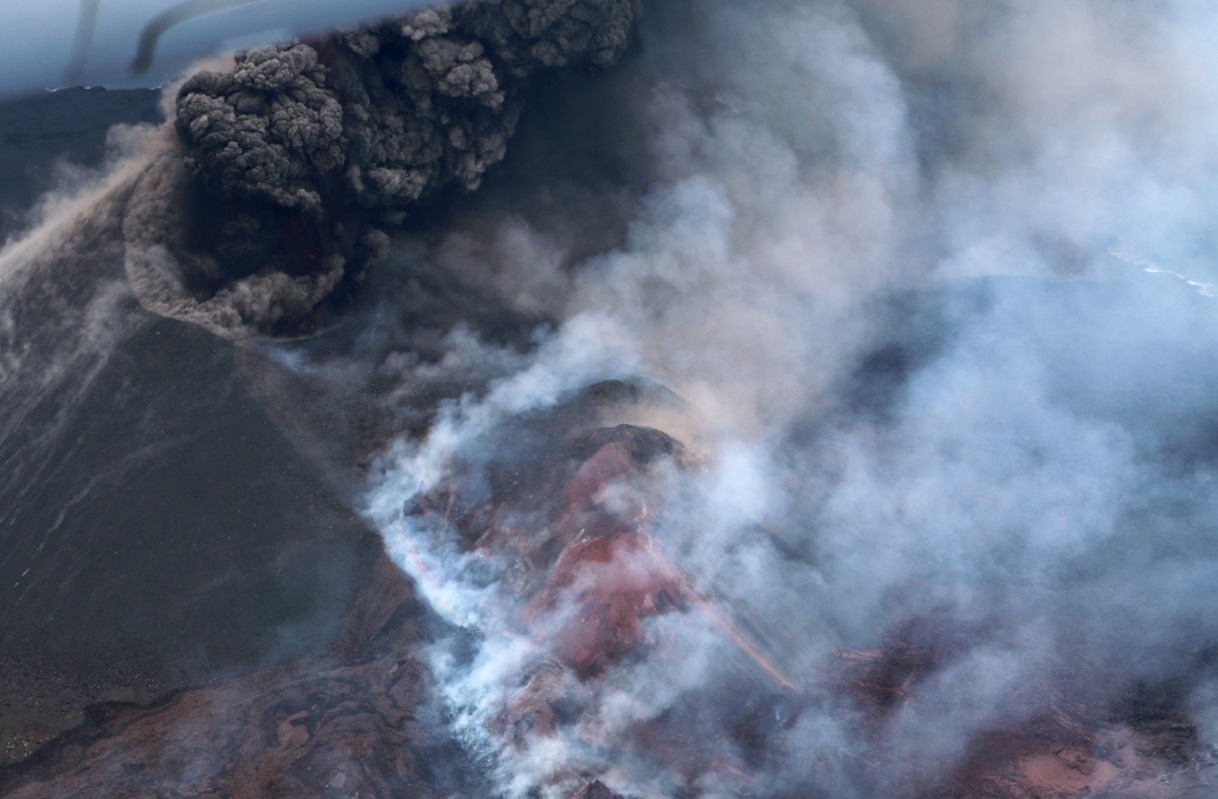
Nishinoshima volcano, taken on June 29. Image credit: JCG
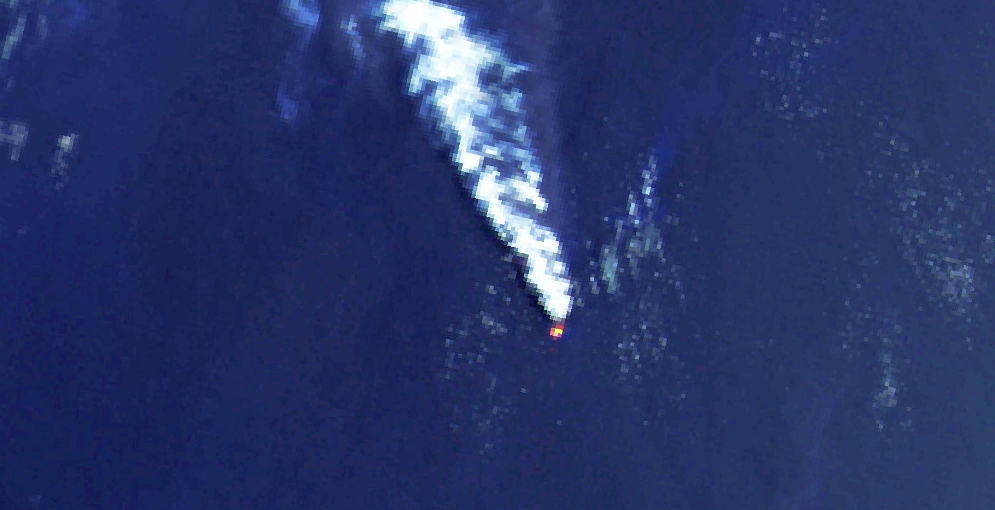
Image credit: Copernicus EU/Sentinel-3, Antonio Vecoli. Acquired July 1, 2020
The eruptions continued the following day as JCG confirmed active volcanic activity on June 29, noting that the central crater is extending to the southwest.
The volcano was emitting black smoke plume violently, as JCG described, reaching an altitude of more than 3 400 m (11 150 feet).
Lava flowed down the southwest coast and into the sea, it added.
Animation of #Nishinoshima volcanic #SO2 plume as seen by #TROPOMI. @tropomi #S5p #Sentinel5p @DLR_en
@BIRA_IASB @ESA_EO #SO2LH pic.twitter.com/ij4OLSNHMC— TROPOMI SO2 (@DlrSo2) June 29, 2020
【海上保安新聞】
海上保安庁は6月29日、西之島(東京・小笠原諸島)を上空から観測した結果、中央火口が南西に広がっているなど活発な火山活動を確認した。黒色の噴煙が激しく噴出し、高度約3400㍍以上に達している。溶岩は南西岸方向へ流下し、海に流入しているという。#海保 #巡視船 pic.twitter.com/UerdnhC2lT— (公財)海上保安協会【公式】 (@JCGF_umimaru) June 30, 2020
Geological summary
The small island of Nishinoshima was enlarged when several new islands coalesced during an eruption in 1973-74. Another eruption that began offshore in 2013 completely covered the previously exposed surface and enlarged the island again. Water discoloration has been observed on several occasions since.
The island is the summit of a massive submarine volcano that has prominent satellitic peaks to the S, W, and NE. The summit of the southern cone rises to within 214 m (702 feet) of the sea surface 9 km (5.6 miles) SSE. (GVP)
Featured image credit: JCG

“I noticed that the southernmost part of the country went up considerably,” he told Newsweek. “To investigate this more, I started gathering GPS data from the surrounding countries. The more I looked, the better I started to see this area of anomalous upward motion, and that this area was also [being] slowly pulled apart. I extended my scope to look at all of Europe—that is not part of the tectonic boundary around the Mediterranean Sea.”
In the latest study, Kreemer and colleagues found that the land surface across a large area, centered on the Eifel region, but covering parts of Belgium, The Netherlands, France, and Luxembourg is moving upwards—or uplifting—which is unusual for most places in Europe, besides the Alps mountain range and Scandinavia.
“There were previous hints that the area has been going up, particularly in Belgium, but those studies were limited in scope and there was a lot of debate on what it meant; that is, were they seeing a regional signal or local instabilities,” Kreemer said. “We used a lot more data that leaves no room for uncertainty. There is also evidence for uplift of geologic time-scales—about the last 800,000 years—but our results show that the area is uplifting much faster than it has done over those last 800,000 years.”
800,000 years ago was earths last magnetic pole reversal.
https://www.newsweek.com/ancient-volcanic-region-germany-moving-unusual-way-1510164
An ongoing earthquake swarm in Iceland has now reached around 9,000 quakes, officials have said. The swarm, in the north of the country, began on June 19. Experts with the Iceland Meteorological Office (IMO) said activity is ongoing and more earthquakes can be expected.
In an updated statement on the IMO website, officials said there were two events above magnitude 3 on June 28. Both these earthquakes were felt in Siglufjordur and Ólafsfjordur—towns near to where they hit.
The IMO said that of the 9,000 earthquakes, three have been above magnitude 5. This includes a magnitude 5.8 earthquake on June 28. It said there is a chance of more earthquakes of this magnitude in the area.
What is causing the earthquake swarm is not known. Kristín Jónsdóttir, Earthquakes Hazards Officer for the IMO, told the Icelandic National Broadcasting Service RÚV: “We’re trying to figure out what’s going on.”
https://www.newsweek.com/iceland-earthquake-swarm-9000-1514079
A really fantastic article about one of the lesser known Japanese volcanoes in the West. Great videos gathered from all different angles shows the immense seismic energy pushing the black plumes & pyroclastic flows up & out.
This Earth is truly alive & kickin’. Grateful for your excellent reporting. (I am a follower of Dutchsinse, the only earthquake forecaster one can actually rely on! He reports volcanic eruptions when they are relevant to the waves of seismic energy that are always ongoing around this swiftly spinning planet! Check him out if you love things geophysical like volcanoes & equakes!) Again, thanks.